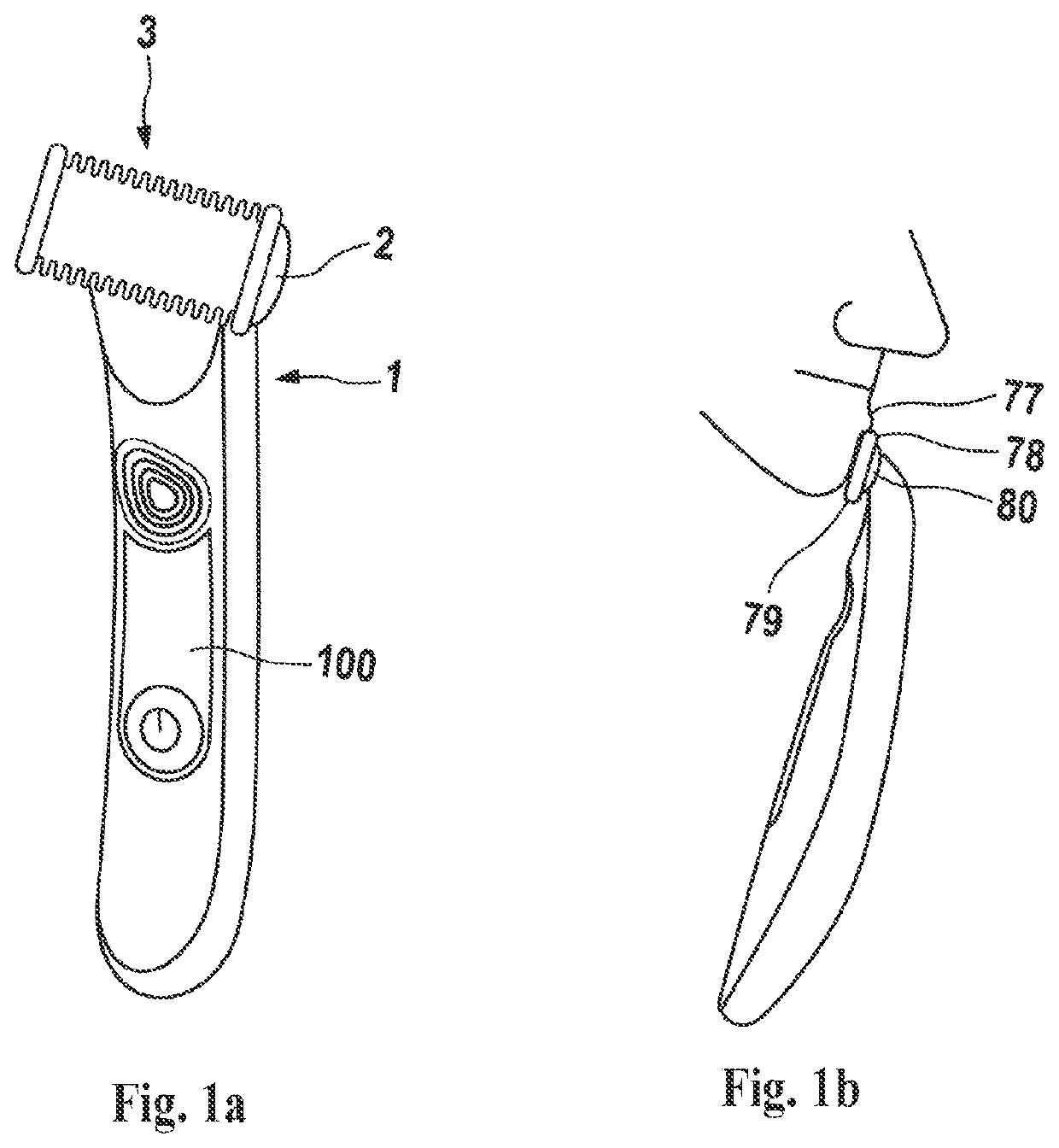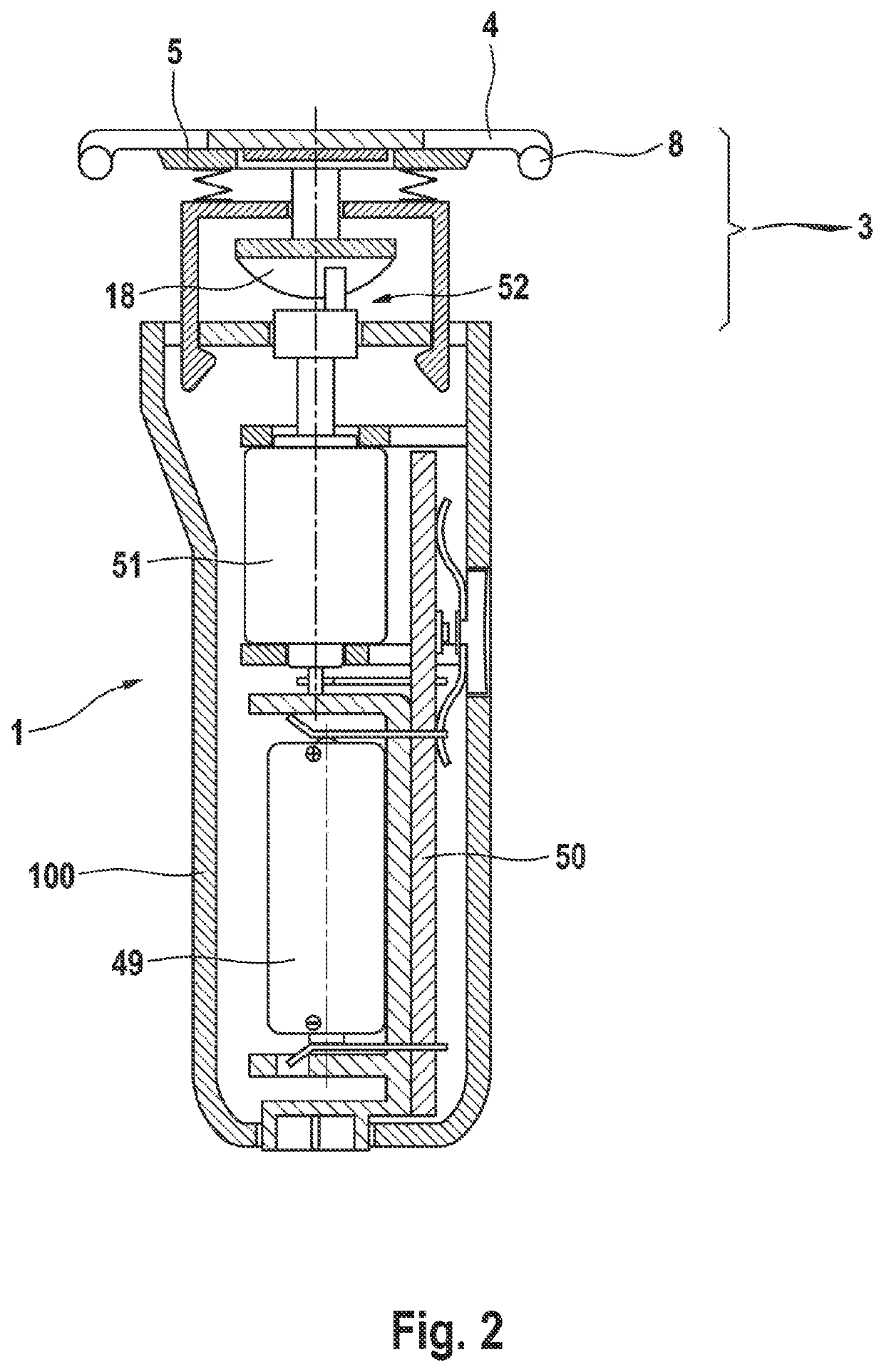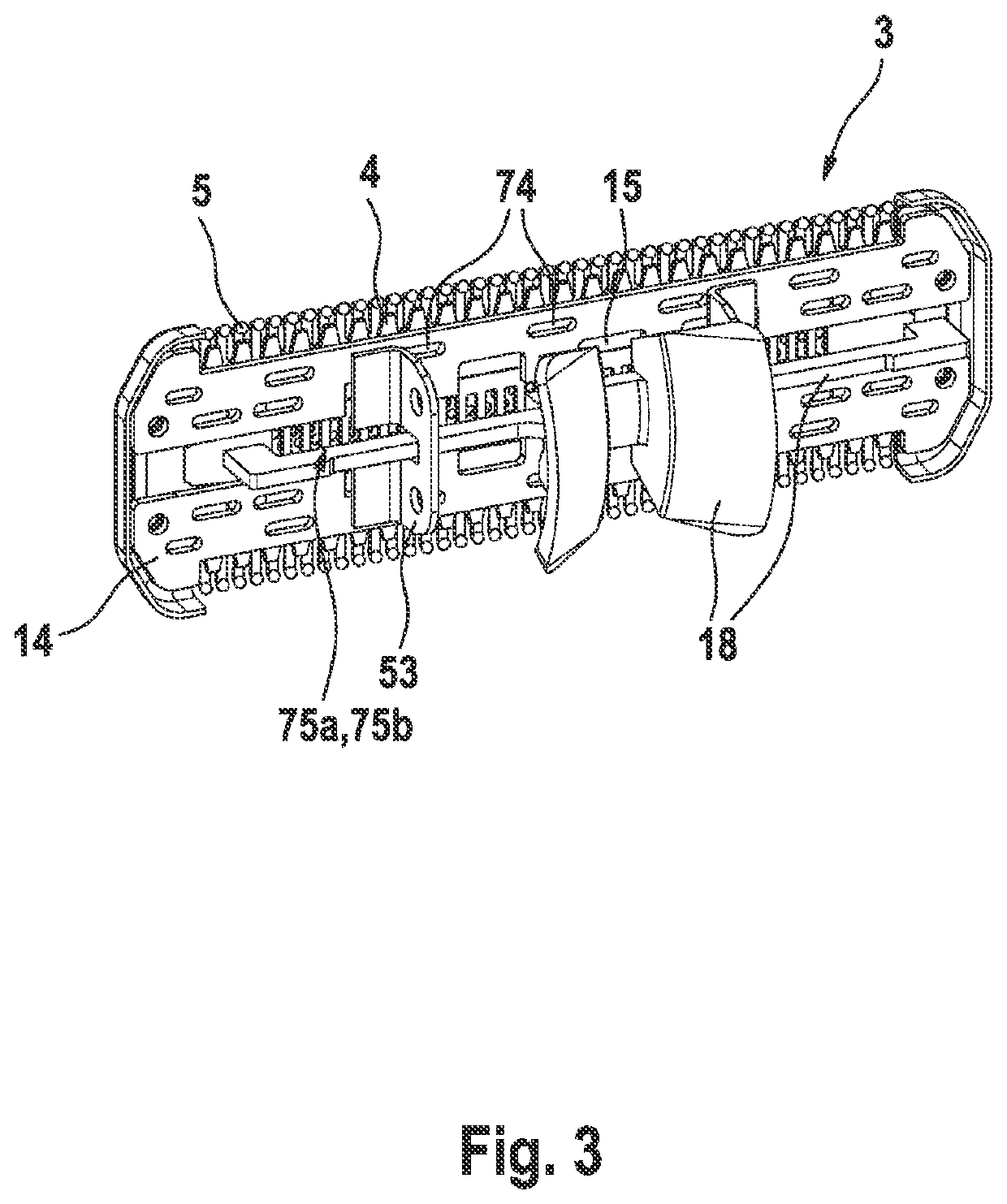Electric beard trimmer
a technology of electric shaver and electric trimmer, which is applied in the direction of metal working apparatus, etc., can solve the problems of not being able to achieve the effect of reducing the risk of skin irritation, not allowing for a more aggressive shave, and not being able to use the projecting teeth substantially perpendicular to the skin surface without causing skin irritation. , to achieve the effect of reliable and clean cutting action, avoiding skin irritation, and good control of edging
- Summary
- Abstract
- Description
- Claims
- Application Information
AI Technical Summary
Benefits of technology
Problems solved by technology
Method used
Image
Examples
Embodiment Construction
[0032]So as to give the user the choice between a more aggressive, closer cutting action on the one hand and a less intensive, more pleasant skin feel on the other hand, the cutter system provides for two separate rows of cooperating teeth which are different from each other in terms of shape and / or size and / or positioning of the thickened and / or rounded tooth tips of the teeth. Thus, using a first row of cooperating cutting teeth may provide for a more aggressive, closer cutting action, whereas using a second row of cutting teeth may provide for a less intensive, more pleasant skin feel. The configuration of the tooth tips, in particular the configuration of the curvature and thickening thereof may considerably influence the cutting performance and allow the user to choose between closeness, thoroughness, soft skin feel and efficiency. Due to the at least two rows of cooperating teeth having tooth tips configured differently aggressive, versatility of the cutter system is significa...
PUM
 Login to View More
Login to View More Abstract
Description
Claims
Application Information
 Login to View More
Login to View More - R&D
- Intellectual Property
- Life Sciences
- Materials
- Tech Scout
- Unparalleled Data Quality
- Higher Quality Content
- 60% Fewer Hallucinations
Browse by: Latest US Patents, China's latest patents, Technical Efficacy Thesaurus, Application Domain, Technology Topic, Popular Technical Reports.
© 2025 PatSnap. All rights reserved.Legal|Privacy policy|Modern Slavery Act Transparency Statement|Sitemap|About US| Contact US: help@patsnap.com



